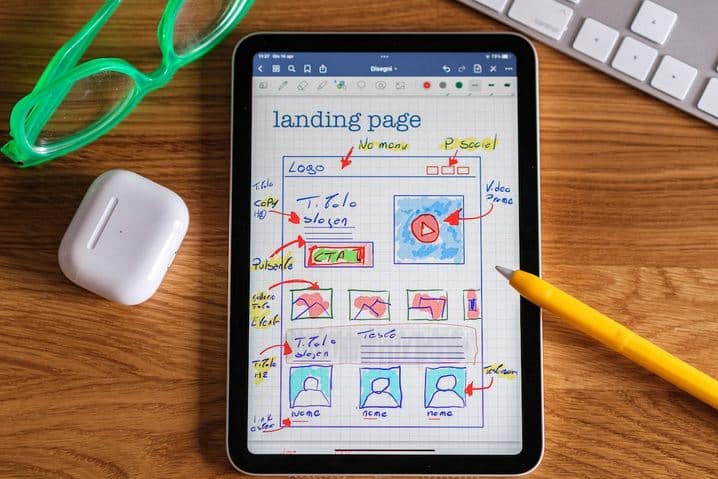
Want to skyrocket your digital marketing results? High-converting landing pages are the secret launch pad for success.
A landing page aims to convert visitors into leads and sales. But without high-converting landing pages, even the best campaigns will struggle to get off the ground.
So, how do you build stellar landing pages that captivate audiences? In this comprehensive guide, I’ll reveal expert tips for creating landing pages with great impacts on marketing efforts.
You’ll discover how to:
- Optimize page copy, layouts, and visuals for high conversions
- Craft an irresistible value proposition
- Boost trust with social proof and testimonials
- Continuously improve through A/B testing
I’ll also share some real-world examples to inspire you.
By the end of this guide, you’ll have an actionable blueprint for designing landing pages that convert better.
Let’s get started on building showstopping pages that turn visitors into leads and sales.
But Why Do You Need a Landing Page?
Landing pages are pivotal in converting interested visitors into leads and customers. They allow you to direct traffic from ads, emails, social posts, and more to a dedicated page with one singular goal: to get visitors to take your desired action.
Without landing pages, visitors would simply land on your homepage. While homepages provide important information, they aren’t optimized to convert visitors from a specific campaign.
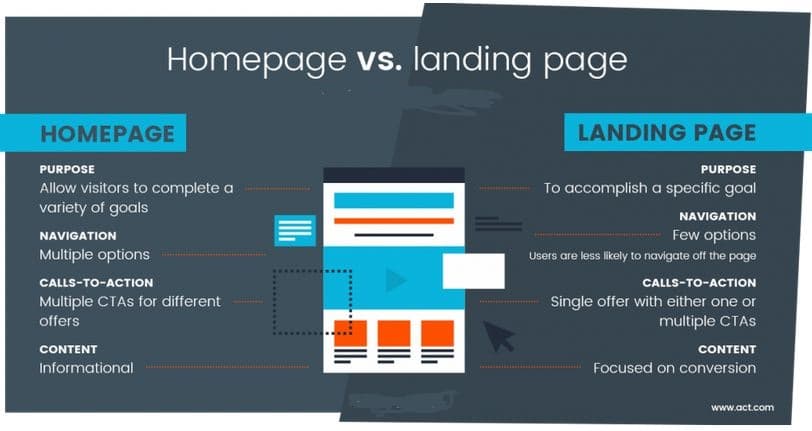
Source: act.com
Targeted landing pages:
- Speak directly to your promo or offer
- Reduce distractions to keep visitors focused
- Guide visitors through a streamlined conversion path
Simply put, landing pages and conversions go hand in hand.
That’s why designing an effective, high-converting landing page is essential. A well-designed landing page:
- Captures attention with relevant branding and visuals
- Clearly communicates your key selling point
- Builds trust and credibility through solid validation like testimonials and reviews
- Minimizes friction during the conversion process
The overall experience should make taking action irresistible. Visitors see and hear exactly what they need to make the next step.
We’ll explore best practices in designing your landing page in later sections of this guide. We’ll also look at examples of highly effective pages.
But first, let’s understand the key elements that make up successful landing pages.
Landing Page Elements
All high-converting landing pages contain certain essential elements. Let’s break down what makes an effective landing page design:
- Headline: A strong headline captures the attention of your target audience and conveys your key message. Keep it clear and benefit-focused.
- Subheadings: Break up sections with subheads that reinforce your value proposition. Guide visitors through the page.
- Hero Image or Video: Visuals that appeal to your target audience set the scene. Ensure they align with your messaging.
- Value Proposition: Persuasively explain your core value to the visitor. Focus on the tangible benefits of your offer.
- Copy: Tightly-written copy convinces visitors your offer is worth taking. You have to balance benefits and features.
- Social Proof: Build trust by featuring testimonials, reviews, and images of happy customers.
- Call-To-Action (CTA): This is a key element on your landing page. Use contrasting CTAs to direct your desired action. Keep them visible through the page.
- Minimal Navigation: Remove unnecessary navigation to limit distractions and keep visitors focused on converting.
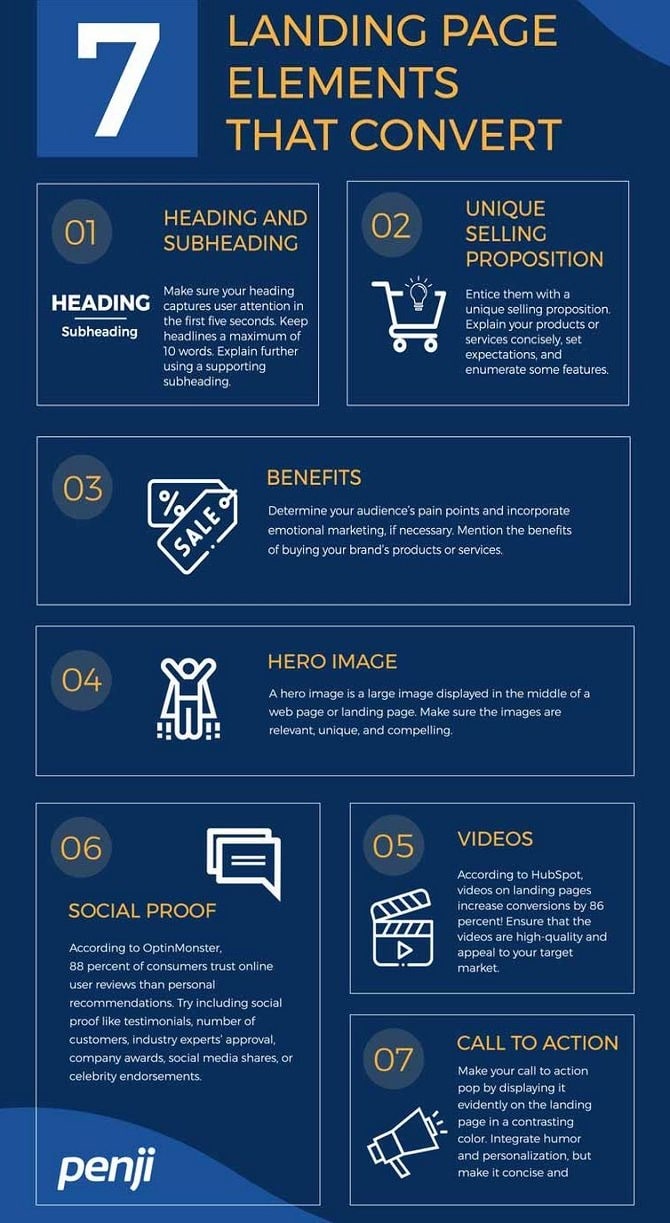
Source: penji.co
Compelling copy and a strong value proposition are especially critical. Your words must create clarity and urgency around taking the next step.
A cluttered page overwhelms visitors and reduces conversions. Only include essential elements to guide visitors to convert.
Now that we’ve covered the core ingredients, let’s look at how to bake them into a winning landing page. Time to explore best practices for highly converting pages!
Landing Page Best Practices
You should follow these best practices to create high-converting landing pages:
- Lead with a strong value proposition: Clearly articulate your core value to visitors upfront. Focus on tangible benefits and keep it concise.
- Begin with an attention-grabbing headline: Use the headline to convey your key message. Keep it scannable with emphasis on the main hook or offer.
- Use visuals that resonate with your audience: Choose images, videos, or graphics that appeal specifically to your target customer.
- Limit copy to the essentials: Every word should move visitors closer to converting. Eliminate fluff and only include necessary info.
- Guide visitors with clear CTAs: Use contrasting CTAs like buttons to direct desired actions. Tell visitors exactly what you want them to do.
- Make key info scannable: Break up sections with subheadings and bullets. Highlight important details with bolding and spacing.
- Add social proof elements: Build trust by featuring testimonials, recognizable logos, security badges, etc.
- Minimize distractions and navigation: Remove all unnecessary elements so visitors focus only on your offer and conversion.
- Use whitespace strategically: Don’t overcrowd the page. White space improves scanability and breathing room.
- Optimize technical elements for speed: Minify code, compress images, and eliminate render-blocking resources for fast load times. Research indicates that every additional second of page load time decreases conversion rates by 4.42% on average.
The overall aim is to craft a targeted, frictionless experience. Your landing page should connect your offer directly to your visitor’s needs. Meet and exceed their expectations with a great landing page.
Understanding the Psychology of Conversions
Beyond the design elements, understanding psychology is crucial for boosting conversions. Let’s explore some cognitive principles that impact how visitors respond to your landing page:
- Social proof builds trust by showing others have taken action.
- Urgency motivates quick action by emphasizing limited-time offers or dwindling inventory. Countdown timers, limited spots, and expiring discounts can drive fear of missing out (FOMO).
- Scarcity increases perceived value through exclusive or limited offers. Highlighting small-batch products or VIP access makes visitors feel special.
- Reciprocity encourages conversions by providing something of value for free upfront. Offering free shipping, trials, demos, or content incentivizes visitors to take the next step.
- Contrast draws attention to your CTA by differentiating it through color, size, placement, etc. This guides visitors to your desired action.
- Anchoring uses a baseline reference price to make discounted offers seem more appealing. Strike-through original prices to amplify the deal.
Integrating these principles into your design can significantly boost the conversion rate for landing pages. Make exclusive offers, showcase social proof, and use urgency cues to motivate desired actions.
The aim is to anticipate customer psychology and remove any mental barriers holding visitors back from converting. Make taking the next step irresistible for them!
Leveraging Video and Multimedia
Adding multimedia interactive elements to your landing page can significantly improve engagement and conversions.
Video is an especially powerful medium that brings your page to life. Benefits of landing page video include:
- Increased conversions – Video better engages visitors with motion and visuals.
- Higher retention – Visitors spend more time consuming video content.
- Brand building – Video showcases your product or service and personality.
- Trust building – Seeing and hearing founders builds rapport.
When incorporating video:
- Place it prominently near the top of the page to capture attention fast.
- Keep videos short – under 2 minutes for maximum impact.
- Include a compelling introductory frame enticing viewers to watch.
- Make sure sound is enabled but not sudden or blaring.
Beyond video, interactive visual elements like:
- Animated graphics
- Scrollytelling sections
- Product configurators
- Interactive calculators
…can also boost engagement when relevant to your offer.
For example, SaaS demos often use an interactive tour format on their landing pages to showcase the product experience.
The key is choosing multimedia elements that provide value and work cohesively with the rest of your page. Don’t add them just for the sake of it.
Designing Your High Converting Landing Page
Crafting a converting landing page is like painting a masterpiece – it takes planning, care, and a bit of creative genius. Here are the major steps you should follow:
- Get inside your ideal visitor’s head. What makes them tick? What needs are you fulfilling? Design with their worldview in mind.
- Map out user flow. Guide visitors gently through each section towards conversion. Apply design principles like unity and emphasis to create a clean layout focused on your goal.
- Write catchy headlines, scannable copy, and prominent calls to action that speak directly to your visitors’ needs and get them motivated to take action.
- Sprinkle in social proof to get rid of any doubts.
- Strategically add visuals that appeal to your audience while reinforcing your message.
- Optimize everything for lightning speed – slowness kills conversions!
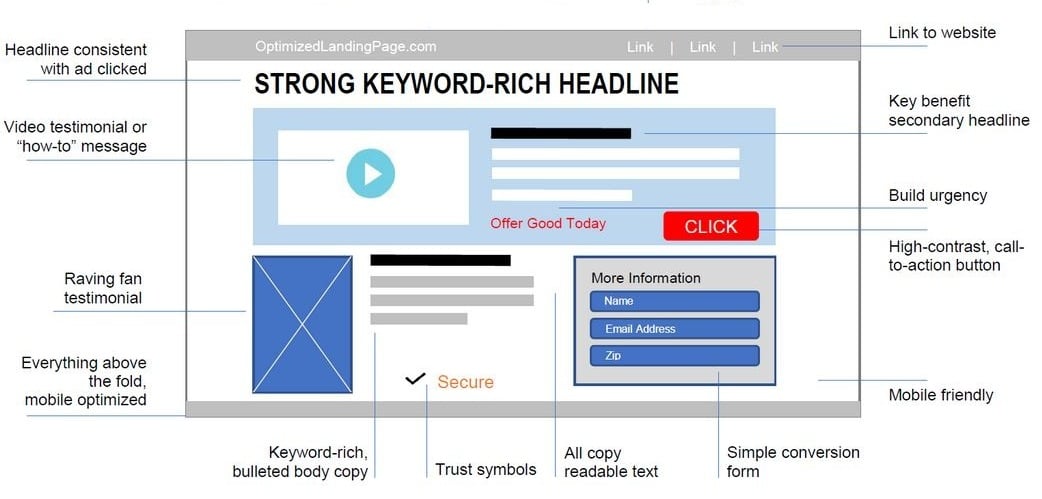
Source: amperagemarketing.com
Execute each element thoughtfully like you’re crafting a masterpiece. With psychology-driven design and meticulous attention to detail, you can build a landing page that connects deeply and converts visitors into delighted customers!
Landing Page SEO and Keyword Optimization
Making your landing pages easy to find is super important. Using search engine optimization (SEO) helps get them found by Google and others. This brings free website traffic. Let’s talk about how to optimize landing pages for search.
Do keyword research
Figure out what words and phrases people search for related to your offer. Tools like Google Keyword Planner can help find good keywords.
Include keywords in the page title and headlines
Put your most important keyword in the page title – this is key! Also use it in headlines and subheads.
Add keywords to page copy
Naturally work keywords into your landing page copy without forcing it. Aim for a 1-2% keyword density.
Optimize image file names and alt text
Name image files and alt text with relevant keywords – don’t just call them image1, image2, etc.
Create unique meta descriptions
Write a solid meta description summary with keywords for each page.
Include keywords in URLs
Add keywords to the page URL if possible – don’t just use numbers.
Make the page easily crawlable
As much as possible, minimize the use of images, Flash, and iframes. Focus on text content.
Speed up load times
Faster page speeds improve SEO rankings. Compress images, minify code, etc.
Link to your landing pages
Links from related pages on your site boost page authority. But avoid too many menus and links.
Optimizing with keywords helps search engines understand your landing pages. This can get you lots of relevant organic traffic! But avoid awkward keyword stuffing. Stay natural.
Mobile-First Landing Page Design
With mobile internet usage continuing to rise, taking a mobile-first approach to landing page design is now essential. According to research by Statista, mobile devices accounted for 58.33% of total website traffic worldwide in the first quarter of 2023.
Let’s explore how to craft landing pages tailored for mobile users:
- Use responsive design to automatically adapt layouts for any screen size. This creates consistency across devices.
- Simplify page layouts. Stack elements vertically in a logical flow for small screens.
- Increase font sizes and button sizes for readability on smaller displays.
- Check that touch target sizes and spacing accommodate fat fingers.
- Minimize unnecessary page elements and avoid carousels that are hard to navigate on mobile.
- Ensure clickable elements like calls-to-action are prominently visible above the fold without scrolling.
- Optimize pages for faster load times on mobile networks. Large images can bloat page size.
- Small screens may hamper Infographics and videos. Use mobile-friendly alternatives.
Testing your landing pages on mobile devices is important to identify usability issues. The experience should feel natural and intuitive, not frustrating.
With Google’s mobile-first indexing, landing pages that aren’t mobile-optimized risk poor search visibility. Your landing page should deliver a fast, seamless mobile experience.
Optimizing Your Landing Page
Creating a high-converting landing page takes continuous optimization. You need to constantly refine and improve your page based on data and testing.
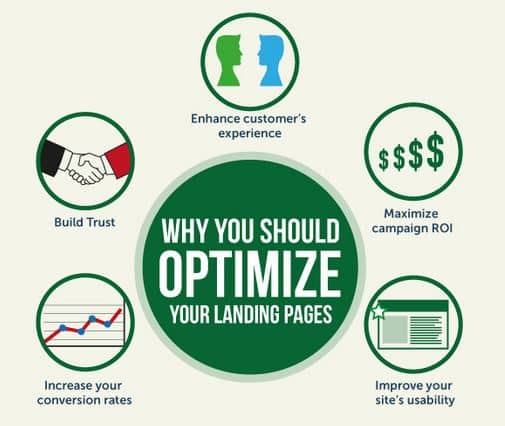
Here are tips for optimizing conversions over time:
Implement A/B testing – This split tests two versions of elements like headlines, copy, layouts, etc., to see which performs better. You can identify improvements that lift conversions.
Analyze heatmaps – Heatmap tools show where visitors click and scroll on your page. Look for low-activity areas that should be removed or altered.
Study visitor recordings – Visitor session recordings reveal how people navigate your page. Watch for usability issues causing dropoffs.
Set conversion rate benchmarks – Research averages for your industry. If your average landing page conversion rate falls below benchmarks, optimize further.
Check your analytics – Metrics like bounce rates indicate how engaging your entire landing page is. Use this data to refine page elements.
Try different calls-to-action – Test different CTA wording, placement, and button colors and see the impact on conversions.
Reduce form fields – Too many form fields increase abandonment. Remove non-essential fields.
Improve page speed – Faster load times result in higher conversions. Check site speed tools for optimizations.
Refine for mobile – Simplify layouts and increase tap target sizes to improve mobile experience.
Rewrite copy – Improve readability by cutting off unnecessary words and phrases. Use shorter sentences with simpler syntax. Break up long paragraphs.
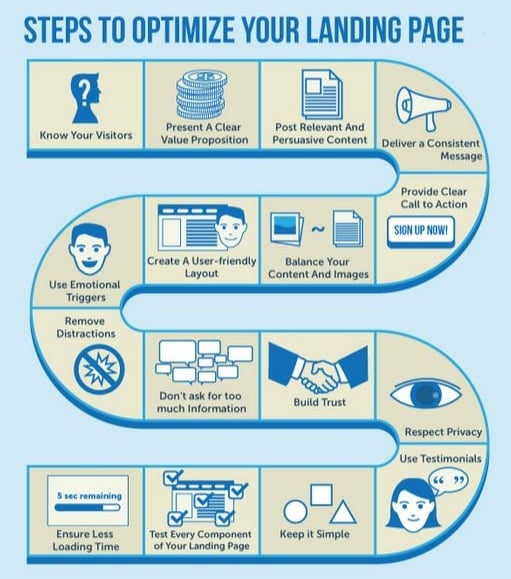
Source: invespcro.com
Keep iterating and testing your landing pages to unlock even better results over time. Consistent landing page optimization is key for higher conversions.
Examples of High-Converting Landing Pages
Now let’s explore some of the best landing page examples across different industries and what makes them effective.
1. Shopify
Shopify’s landing pages convince you their e-commerce platforms are easy to use and will grow your business.
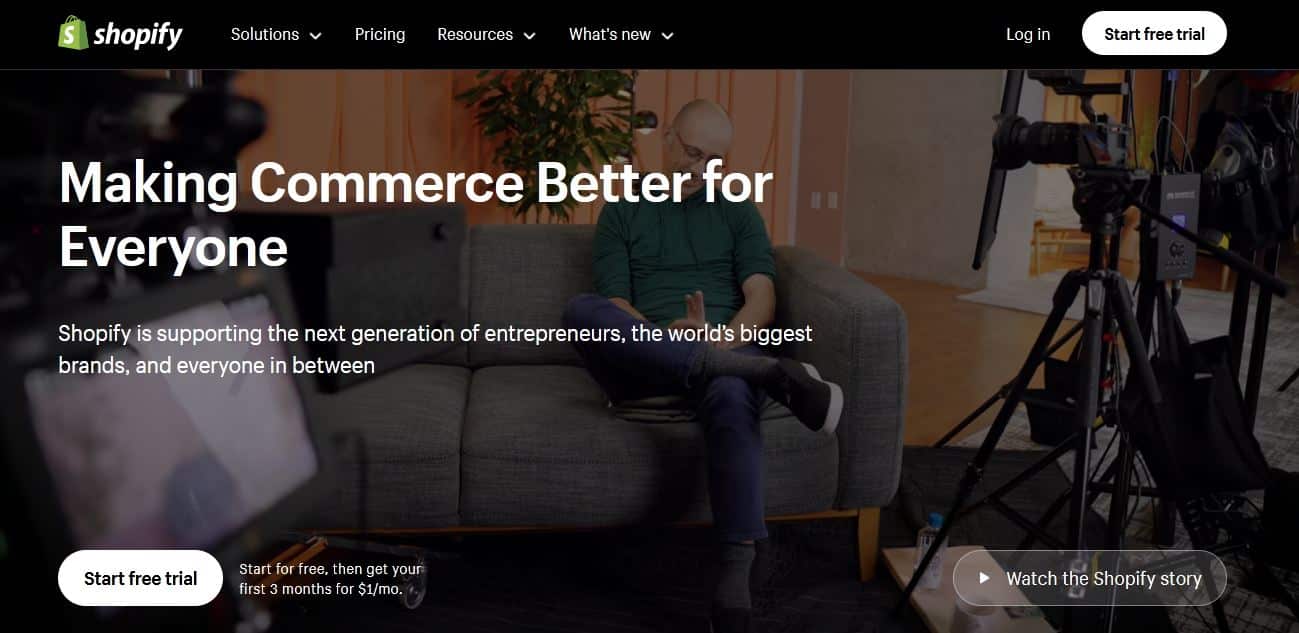
Their pages feature:
- Clean, uncluttered layouts focusing on one key message
- Short, punchy headlines that sell the benefit
- Minimalist copy explaining the product value
- Prominent contrasting call-to-action buttons
Takeaway: Lead with a strong, benefit-driven headline. Use simple but polished visuals that align with your messaging.
2. Mailchimp
Mailchimp’s landing pages highlight how their email marketing platform makes reaching customers easy.
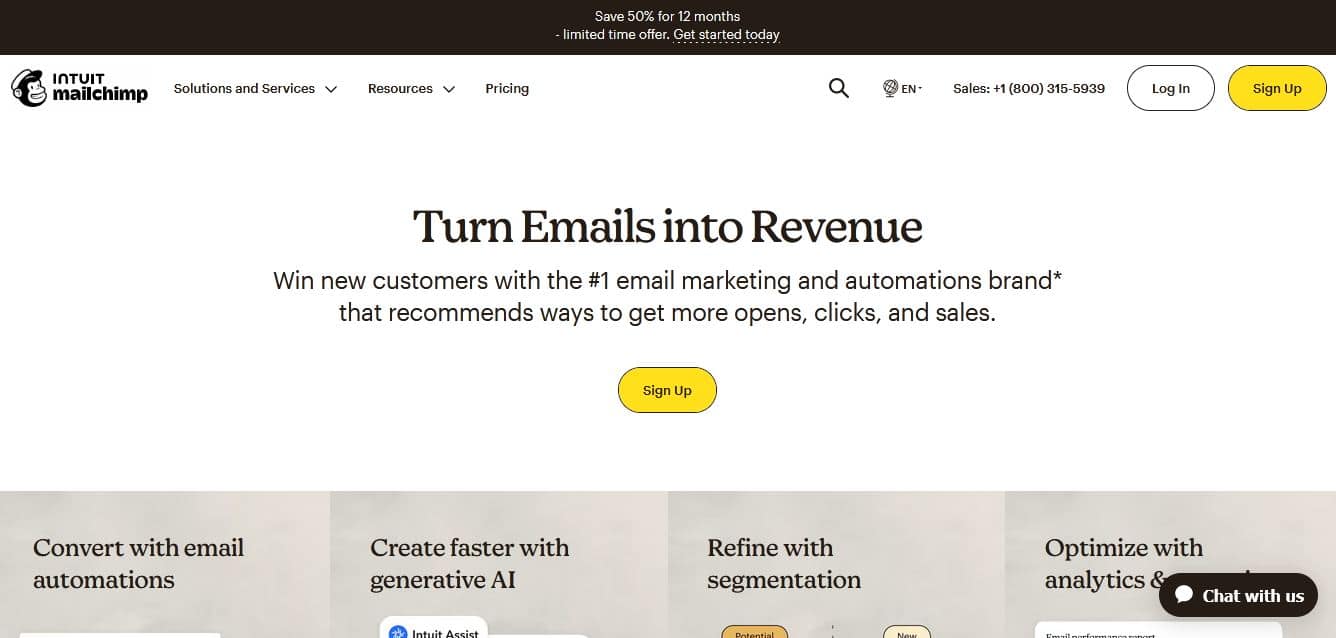
They use:
- Short paragraphs focused on you, not features
- Discount marketing and limited-time offers to increase sign-ups
- Contrasting call-to-action buttons that invoke the next steps.
Takeaway: Write conversational copy focused on user benefit. Give discount offers with a time limit.
3. HubSpot
HubSpot’s landing pages convince you to get a demo or try out their premium tools for free. They also give relevant educative information about each of their software.
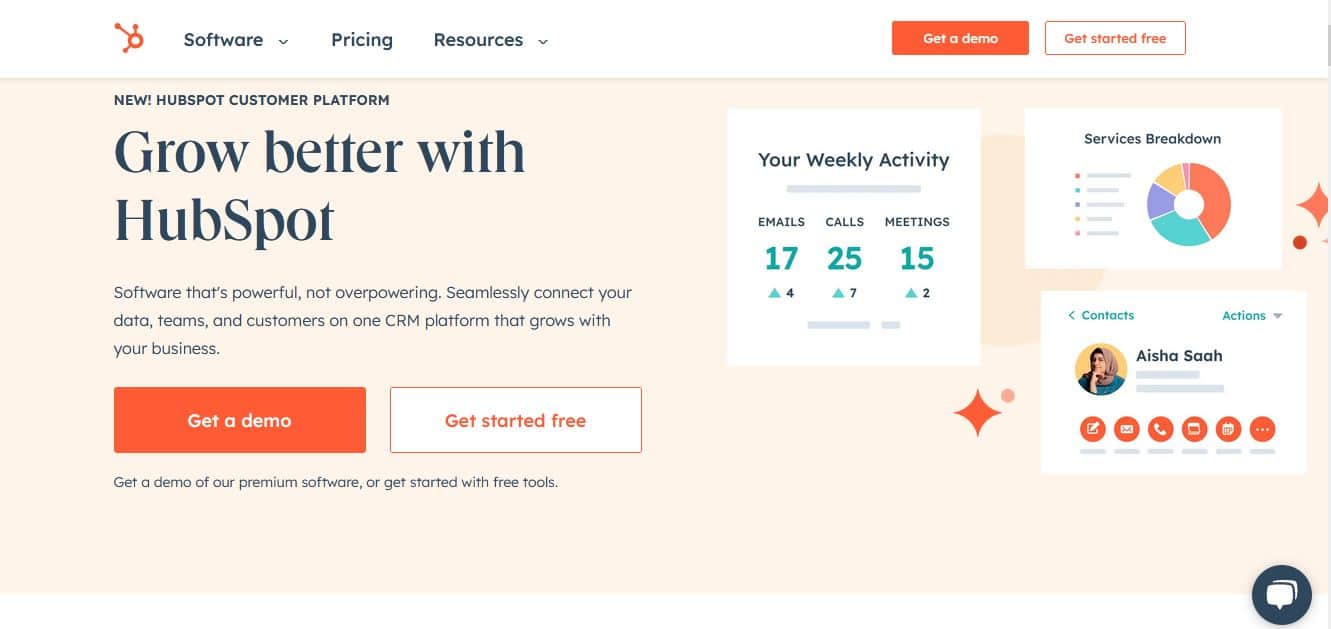
- Specific headlines presenting benefits
- Simple layouts with plenty of negative space
- Prominent contrasting call-to-action buttons
- Social proof with recognizable brands shown as users
Takeaway: Lead with a specific value in headlines. Use scannable copy and whitespace strategically.
4. Amazon
Amazon’s high-converting product category pages include:
- Strong photography showcasing the product selection
- Tightly edited copy emphasizing selection, ease of purchase, fast shipping
- Large, obvious Add to Cart buttons near each product
- Rich customer reviews that provide social proof
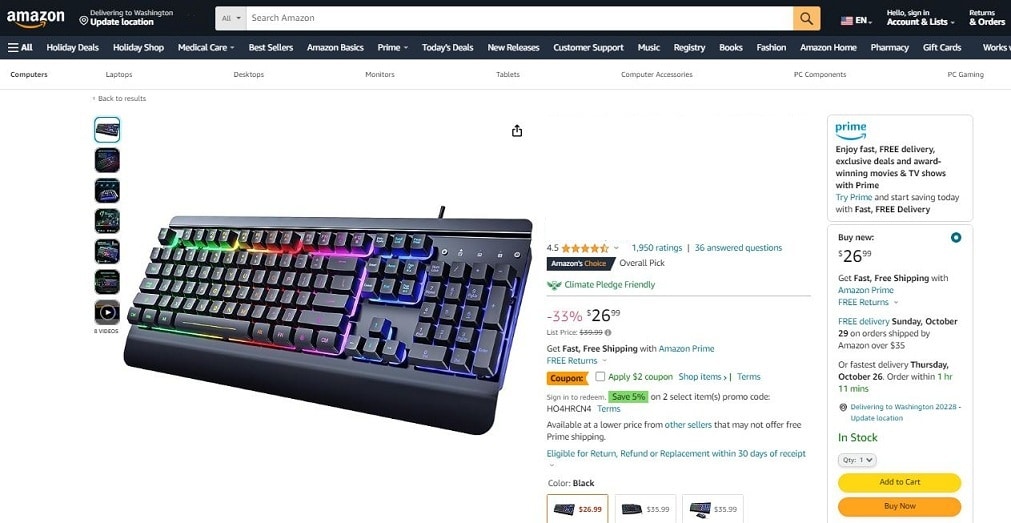
Takeaway: Let bold visuals tell the story. Make calls-to-action for desired actions highly visible using contrasting colors.
5. Slack
Slack’s page quickly communicates the core value of enhanced team collaboration. The bold headline “Made for people. Built for productivity,” supported by visuals, drives this message home.
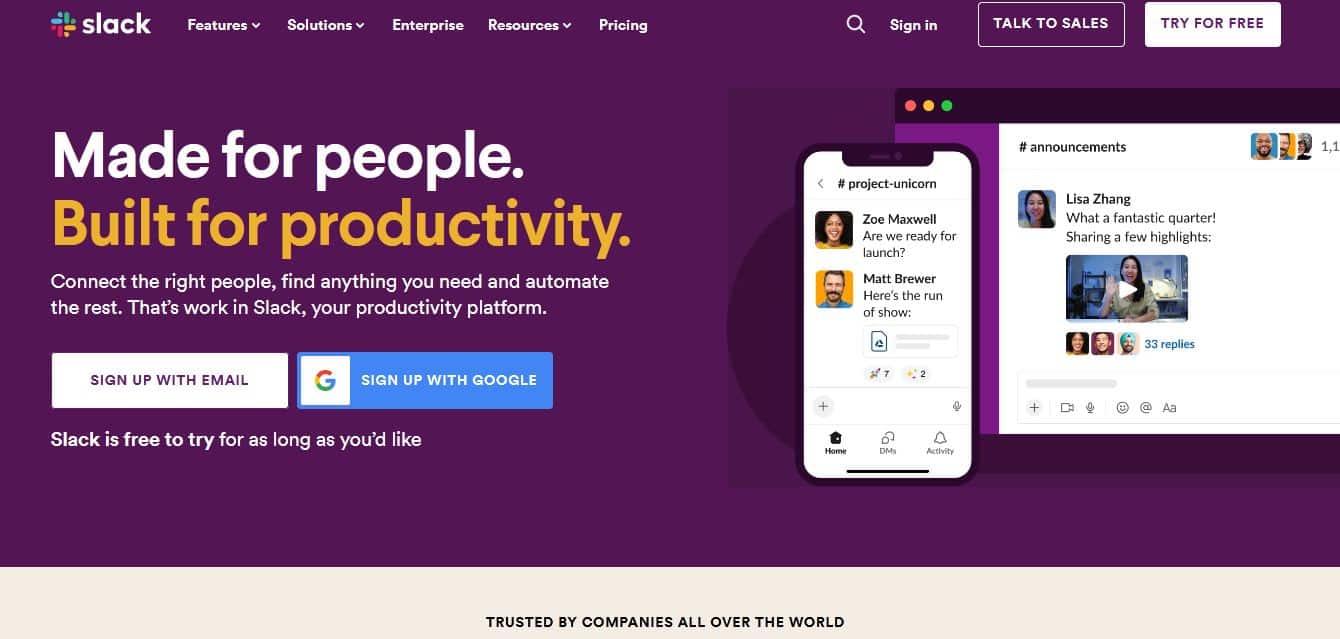
Succinct copy elaborates on key features and benefits. A prominent free trial CTA entices visitors to experience Slack hands-on. This balance of education and motivation is effective.
Takeaways: Convey your #1 value clearly upfront. Focus copy on user benefits and make signing up or purchasing frictionless.
Study these examples and let them inspire the design of your landing page.
Conclusion
You now have a plan for making great, high-converting landing pages. By using the tips in this guide, you can improve the conversion rate of your pages.
Don’t settle for mediocre pages that don’t convert well. Put these lessons into action! Look at your current pages and find ways to make them simpler, faster, and more engaging. Use data and testing to make your pages better steadily.
With strategic planning and non-stop improvement, you can create landing pages that turn visitors into customers and achieve your goals.
A well-designed landing page paired with targeted advertising is the ultimate goal for any result-driven business online. At AdvertiseMint, we can help drive qualified traffic to your landing pages through our paid social media ads services.
Qualified traffic will significantly boost the conversion rate of your landing pages and help to grow your business. Partner with AdvertiseMint today and let our ads experts make that happen for you.
Need more information on how we can send highly targeted leads to our landing pages?
Click here to book your FREE Facebook Ads consultation now!
